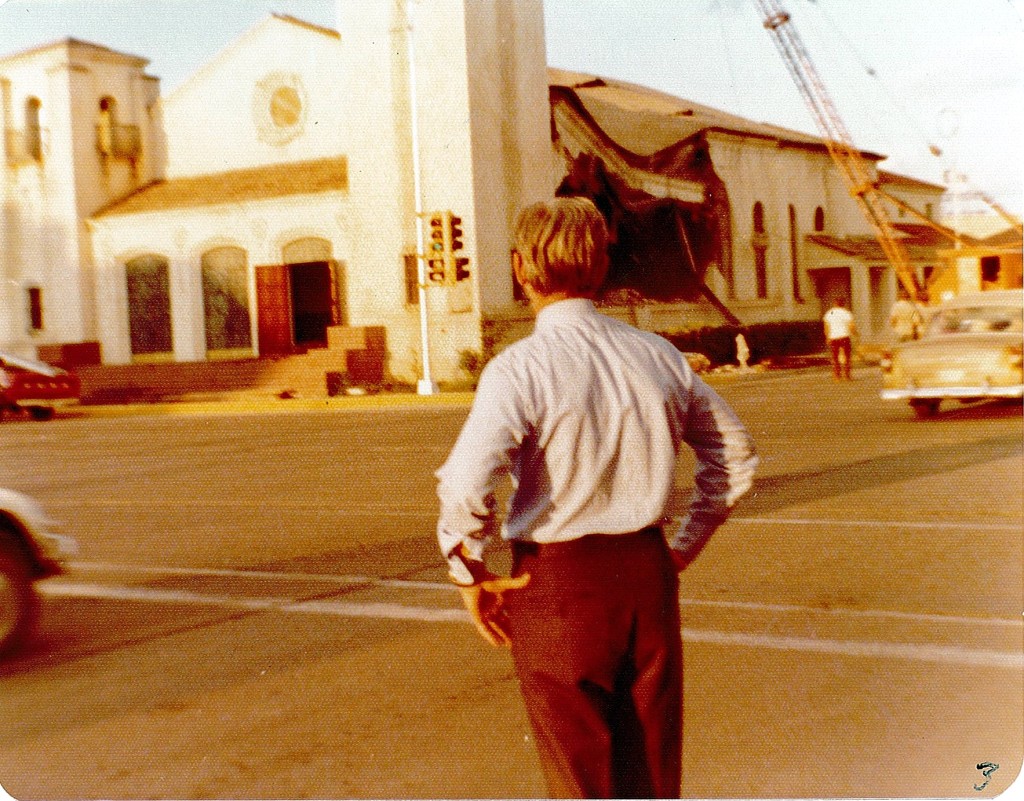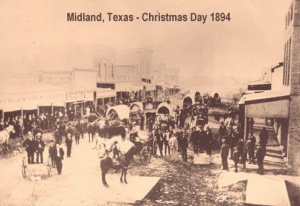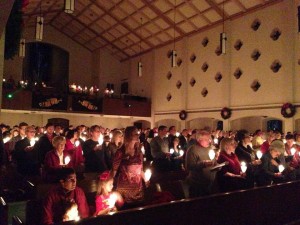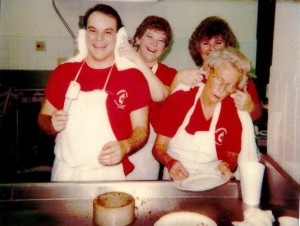“Have you noticed the activity around the Chapel? The salvaging of parts for reuse . . . and disposing of the remaining portion of the building are proceeding at a rapid pace.”

Chapel architect Charles Neuhardt watches as the old sanctuary ceiling sags into the hole made by the demolition team.
The demolition of the 1940s sanctuary was part of a years-long building program that included the construction of the current sanctuary in the late 1960s. The congregation in those years endured the same type of excitement and discomfort we will face over the coming months. In fact, during the construction of the 1940s church, services were held down the street in a movie theater! At present, the worst we face is moving some adult connecting classes and relocation of Contemporary worship to the Activity Center.
“Orco Studios, designer and manufacturer of the art glass in our present Sanctuary, has removed and taken to their shop for reworking and making suitable for reuse one of the memorial windows. . . . All the remaining smaller windows have been taken by Orco to their studio for design and reassembly into a large inside type window suitable for use in the new chapel. . . . The remaining structure has been sold to the highest bidder for salvage with the stipulation that he deliver to the Church the bell [and the] cornerstone and contents.”
We saved significant pieces of that church to become elements of the Glass Chapel. As we rework a major segment of the building again, we will keep a few special items, including the bell and cornerstone preserved in 1974.
But we only preserve a few relics. The rest is removed to make way for the new. We may fondly keep some item to remind us of our yesterdays but we are always working for our tomorrows. For well over a century and a quarter, we Methodist here in downtown Midland have been tearing down something, remodeling something, so that we could build something new for the future benefit of God’s kingdom here on the edge of the Llano Estacado.
“Outstanding pledges and commitments are expected to retire the building fund indebtedness on time and should also provide additional funds to accelerate some repairs and maintenance work that is long overdue.”
There have always been costs, especially monetary ones, for this kind of work. Our amounts may be larger today but we have to remember those smaller numbers in earlier years were proportionally as significant as those with which we struggle. We pledge all we can and we work hard to retire whatever debt we incur but we continue to build and rebuild as God leads us to. It’s just our turn–yours and mine.
“Demolishing should get underway soon.”
I think we are ready once again.
(October 20, 2015)



